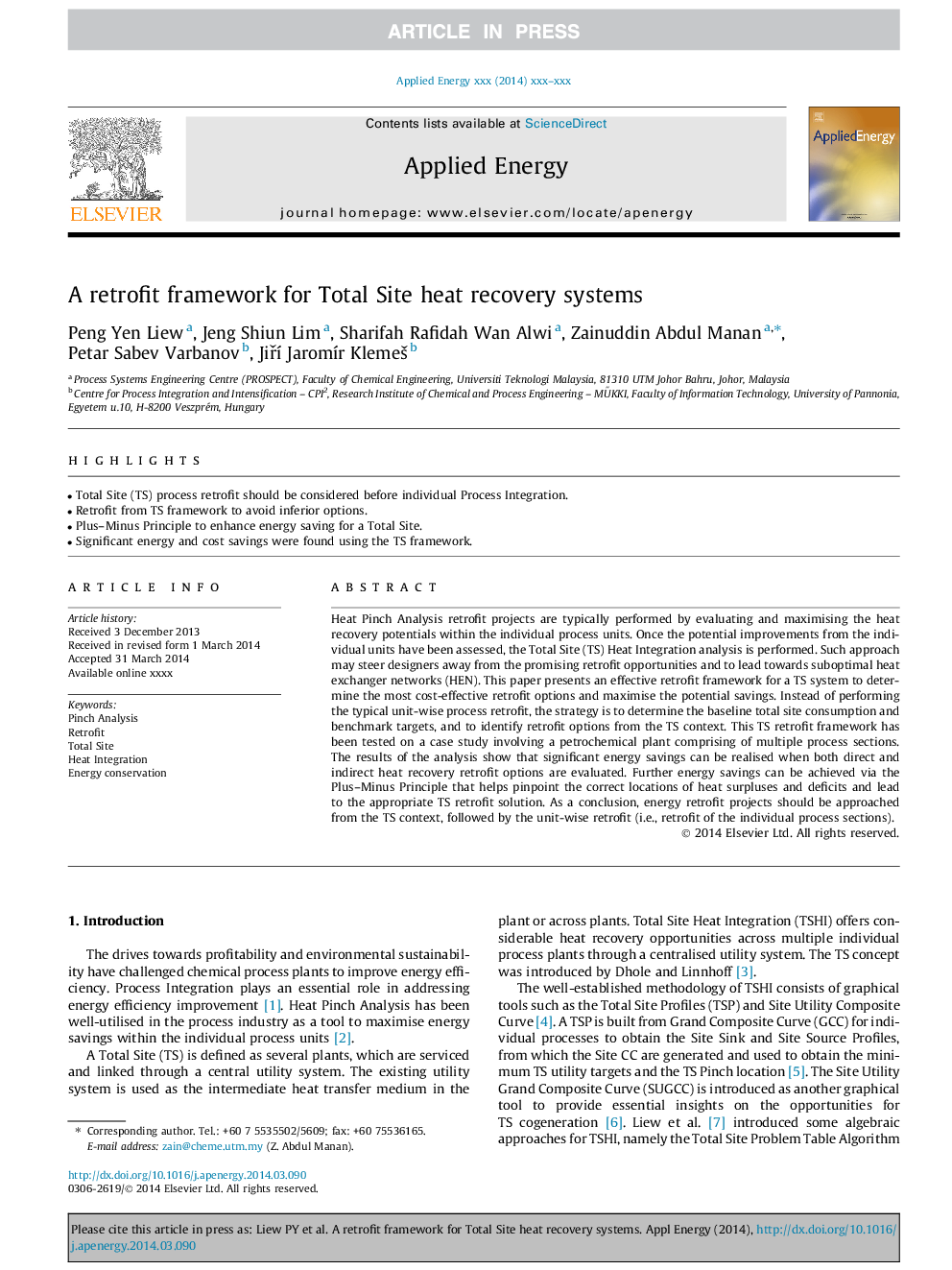| Article ID | Journal | Published Year | Pages | File Type |
|---|---|---|---|---|
| 6689405 | Applied Energy | 2014 | 13 Pages |
Abstract
Heat Pinch Analysis retrofit projects are typically performed by evaluating and maximising the heat recovery potentials within the individual process units. Once the potential improvements from the individual units have been assessed, the Total Site (TS) Heat Integration analysis is performed. Such approach may steer designers away from the promising retrofit opportunities and to lead towards suboptimal heat exchanger networks (HEN). This paper presents an effective retrofit framework for a TS system to determine the most cost-effective retrofit options and maximise the potential savings. Instead of performing the typical unit-wise process retrofit, the strategy is to determine the baseline total site consumption and benchmark targets, and to identify retrofit options from the TS context. This TS retrofit framework has been tested on a case study involving a petrochemical plant comprising of multiple process sections. The results of the analysis show that significant energy savings can be realised when both direct and indirect heat recovery retrofit options are evaluated. Further energy savings can be achieved via the Plus-Minus Principle that helps pinpoint the correct locations of heat surpluses and deficits and lead to the appropriate TS retrofit solution. As a conclusion, energy retrofit projects should be approached from the TS context, followed by the unit-wise retrofit (i.e., retrofit of the individual process sections).
Related Topics
Physical Sciences and Engineering
Energy
Energy Engineering and Power Technology
Authors
Peng Yen Liew, Jeng Shiun Lim, Sharifah Rafidah Wan Alwi, Zainuddin Abdul Manan, Petar Sabev Varbanov, JiÅà JaromÃr KlemeÅ¡,
